| In order to generate „vacuum“, push the ring -1- for the hand vacuum pump -VAS 6213- into position -A-. |
| –
| Attach the hand vacuum pump -VAS 6213- to the detached hose and generate a vacuum of 0.06 MPa (0.6 bar). |
| –
| Observe the pressure gauge of the hand vacuum pump for approx. 30 seconds. |
| l
| The vacuum must not drop. |
| –
| Search for damage, for example a leaky connection in the hose line, and replace the corresponding part. |
| If the vacuum does not drop: |
| –
| First of all, detach the hose at the hand vacuum pump -VAS 6213-. |
| –
| Remove one of the plugs from the hose ends. |
| If the non-return valve is functional, a significant spluttering can now be heard when the pressure is compensated for in the vacuum reservoir. |
| If no spluttering can be heard: |
| –
| Replace non-return valve. |
| –
| Re-connect all vacuum hoses. |
| Check the control vacuum line to the exhaust turbocharger |
|
|
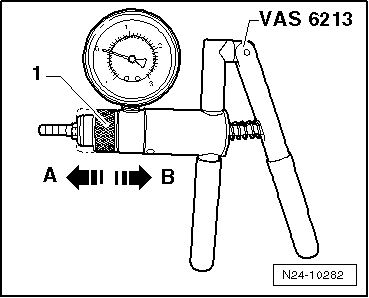
|
 Note
Note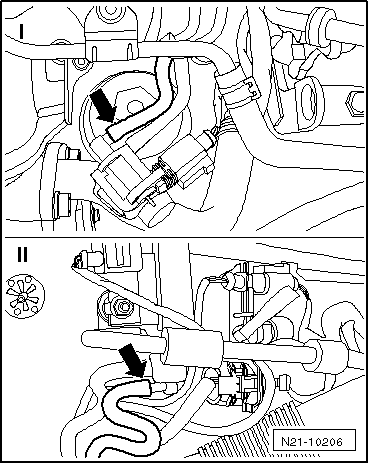
 Note
Note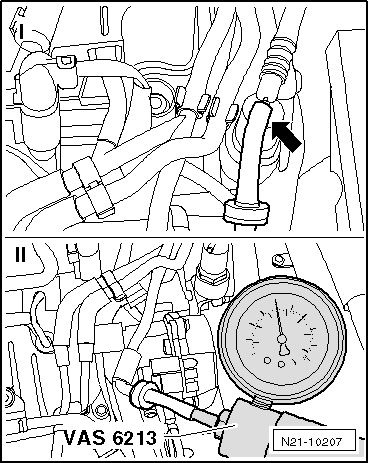

 Note
Note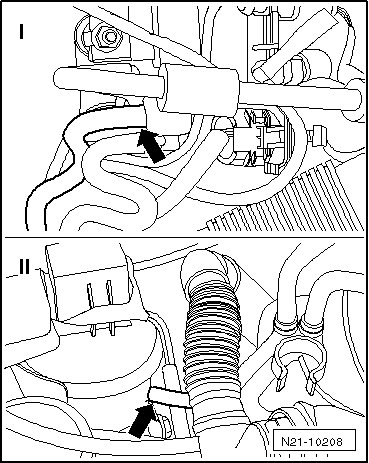
 Note
Note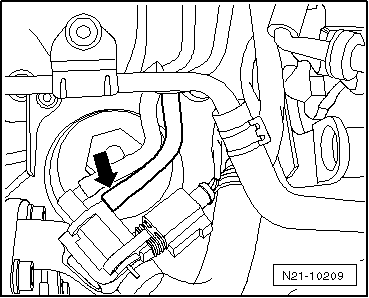
 Note
Note
 Note
Note

 Note
Note
 Note
Note